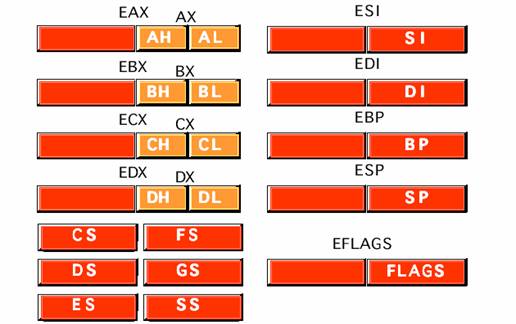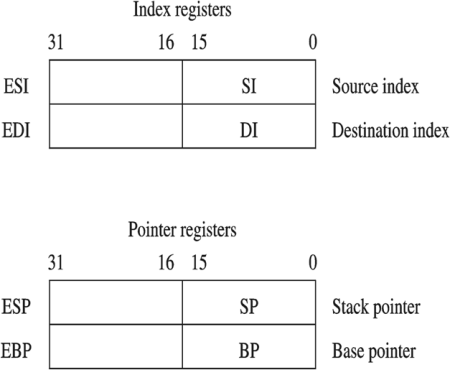-
-
Intel Architecture Software Developer's Manual
-
, Intel Basic Architecture: , PDF, 2.6 MB.
-
, Instruction Set Reference: , PDF, 6.6 MB.
-
, System Programing Guide: , PDF, 5.1 MB.
-
-
It is highly recommended that you download the above manuals and use them as a reference.

-
Introduction to 80x86 Assembly Language and Computer Architecture
-
by Richard C. Detmer,
-
Professor of Computer Science at Middle Tennessee State University, Tennessee.
-
Jones and Bartlett Publishers © 2001 (499 pages)
-
ISBN-13: 9780763717735
-
ISBN-10: 0763717738
-
Hardcover, 512 Pages © 2001
-
Excellent book for beginners

-
The Intel Family Of Microprocessors: Hardware and Software Principles and Applications (Hardcover)
-
by James L. Antonakos
-
ISBN: 1418038458
-
Date: 2006
-
Pages: 640
-
Solid book, covers Pentium CPUs

-
Professional Assembly Language
-
by Richard Blum
-
Publisher: Wrox
-
Date: 2005
-
Pages: 567
-
ISBN: 0764579010
-
Covers Linux Programming
-
Free book online
-
by Paul A. Carter
-
November 11, 2003
-
Free online tutorial
-
Author: Goppit.
-
"First go away and learn assembler, then come back and read this."
-
An introduction to Win32 Assembler programming aimed at filling the gap between the complete beginner and the advanced.
-
Size: 11.31 MB

-
Introduction to Assembly Language Programming: For Pentium and RISC Processors
-
by Sivarama P. Dandamudi
-
Publisher: Springer; 2nd ed. edition
-
Date: 2004
-
Pages: 696
-
ISBN: 0387206361
-
Highly recommended, in depth coverage of concepts.
-
Use google to search for "MASM programmer's guide chm".
-
by Microsoft, 1992, covers Assembly Version 6.1

-
Assembly Language for Intel-Based Computers
-
by Kip R. Irvine
-
Publisher: Prentice Hall; 4th Edition, 2002
-
Pages: 700
-
ISBN: 0130910139
-
Excellent book, lots of sample code, in-depth coverage of BIOS, Win32, MS-DOS.

-
32/64-bit 80x86 Assembly Language Architecture
-
by James Leiterman
-
Publisher: Wordware Publishing, Inc.
-
Date: 2005
-
Pages: 450
-
ISBN: 1598220020
-
Online resources:
-
Advanced book for game and graphics programmers.








